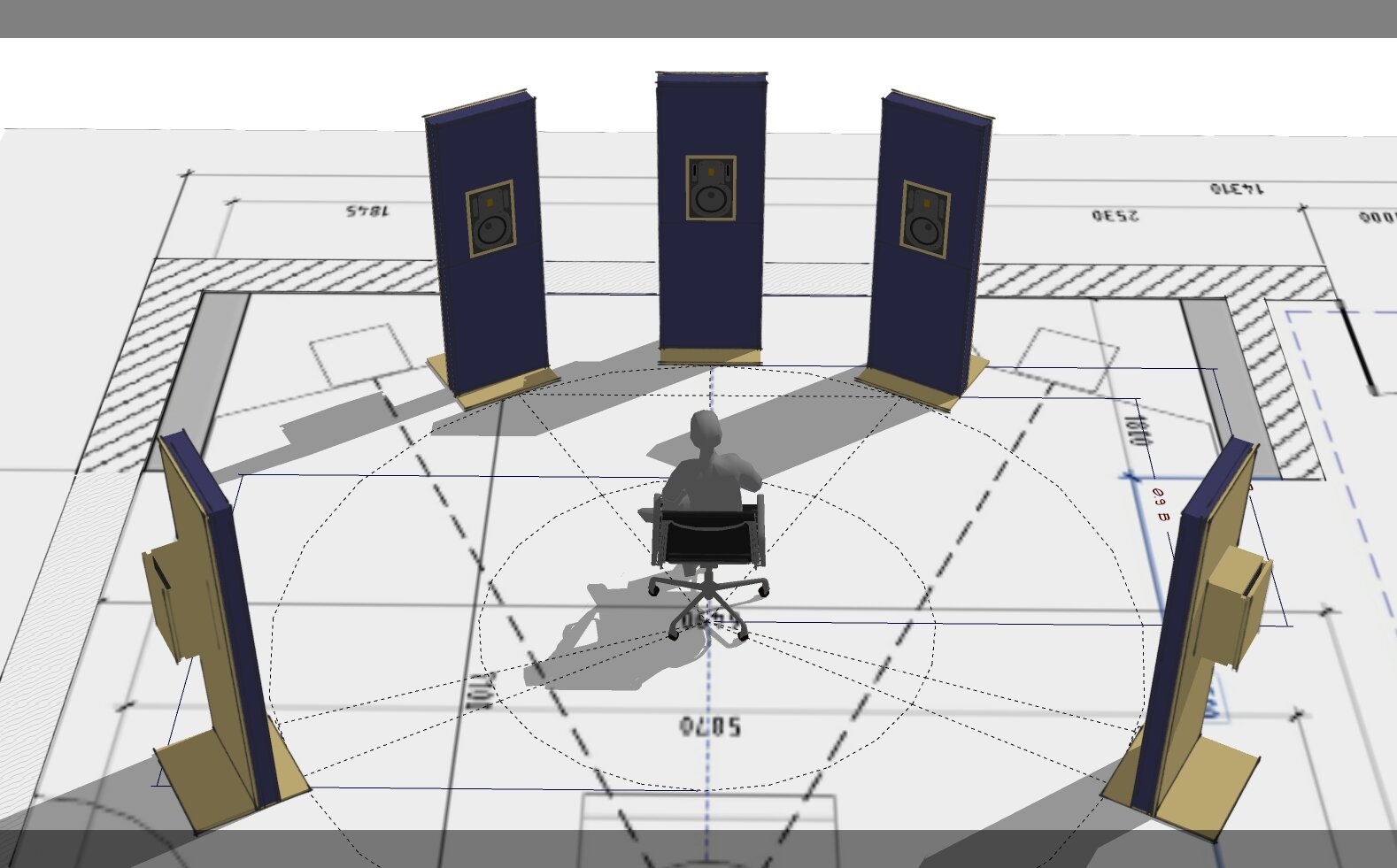-
Posts
2,197 -
Joined
-
Last visited
Posts posted by Glenn Stanton
-
-
my son bought me a "Spark Mini" - small cube amp with BT and USB options + direct input and lots of fun setting options via the phone app. https://www.positivegrid.com/products/spark-mini
-
-
so one option - is use the export dialog:
1) all tracks w whatever effects are on each one
2) all tracks w effects OFF each one
3) a stereo mix of the "master" - all effects on
4) a stereo mix of the "master" - all effects off
basically 4 tasks setup to run. make this a template. when you start a project, open the template (which should have all your stuff setup and routed etc), do your drum kit selection, do the performance(s), and then run your export tasks.
one suggestion - standardize the naming of your tracks across the templates so exporting them and importing them is quick and easy and mostly aligned right from the start.
once you're in the habit it should be quick to get started and quick to export for the mix phase (with all options available - stereo for quick mix for client ok, and full set for detailed mixing later if needed).
this way your time is spent on the kit selection & any effects, composition, and performance. and you're keeping your mind out of the mix complexities until later.
-
couple of options - use a two track of the band recording to perform and record your drums to.
then option one: mix down your drums, export as stereo, and import the stereo track of the drums into the overall band project --- or option two: export all your drum tracks as separate audio files and import those into your band project and mix -- all depends on what you're needing to do from a mix perspective - 2 tracks of drums, or 12 tracks of drums. ?
then upload the project + audio files to your shared location.
-
8 minutes ago, David Baay said:
... enabling 'Clip Follows Project' can cause other issues if it's in the wrong mode, and shouldn't be necessary if the OP just wants to manually drag transients around. ...
true enough but my read was his moving transients around was causing overall tempo issues which is why i had suggest checking the settings.
-
if its recent - i'd run the Cakewalk redistributables exe to make sure any other updates on the system are not conflicting...
How to repair a Cakewalk installation with missing or damaged Microsoft redistributables - Frequently Asked Questions - Cakewalk Discuss | The Official Cakewalk by BandLab Forum
-
 1
1
-
-
ah. you have a very different workflow than me. i do all my recording in a much simpler recording template and only tweak the reference track to use as a performance guide for subsequent tracks. almost no effects in that template. those recorded tracks are exported and used in my mix template where the mixing is performed -- same way as if a client sent me their files -- so from a vocal recording process, i have no region FX active - on rare occasion i have used my Waves RT pitch correction on the monitoring buss FX for the vocal feed.
in this case, it sounds like the ARA bits are not working on the take level correctly.
-
 1
1
-
-
2 hours ago, John Bradley said:
Indeed! Who's got time for that, there's product to ship!
so, then just be quiet and press the "fix it" button and move on! ? people (you know who they are) are only listening to 30-45 seconds at a time anyways via their phone speaker or via the mini BT speakers, to share with their friends who are all sms'ing anyways...
-
 1
1
-
-
perhaps you're not rendering or removing the region FX before trying to do the new take, and Melodyne because it has created a whole bunch of "separations" (short audio snippets) it uses to perform its magic, those are getting overlaid because Melodyne is still an active region FX? if you create a new vocal track and mute the old one, do you still see the Melodyne issue?
i've been using Melodyne for (15 years?) and have not seen this issue. then again, i don't use it in comping take activities, i use on either a raw reference track (where i typically do the entire track at once, then render it), or on a completed comp track copy to do the final fixes, and usually only on sections that need it (and render once done). since the source track and comp track are still intact and muted or archived, the copy is where i do the region FX work - Melodyne primarily.
-
 1
1
-
-
-
what level did you calibrate your monitors to? this plays an important part of the monitoring and thus mastering stage. then understanding the differences between peak values and RMS (short term and integrated LUFS) will impact the perceived loudness.
some guides on this:
https://www.itu.int/dms_pubrec/itu-r/rec/bs/R-REC-BS.1770-4-201510-I!!PDF-E.pdf
https://en.wikipedia.org/wiki/EBU_R_128
https://youlean.co/loudness-standards-full-comparison-table/
https://transom.org/2021/the-audio-producers-guide-to-loudness/
some reading that may be useful: Mastering Pros: How Loud Should My Master Be? (izotope.com) https://www.izotope.com/en/learn/how-loud-should-my-master-be.html
-
 1
1
-
-
-
to Will's point - if you set the track to stereo and record either a single side or both, you get a stereo interleave track. to Bass Guitar's point, if you set the track to mono and record a single side of the IO, you get a mono track. note: the meters will only show L+R (or more in surround), no mono meter...
track 1 = mono track setting and L side of IO = mono track
track 2 = stereo track setting and stereo of IO (i only recorded a mic on L) = stereo track
track 3 = mono track setting and stereo of IO (i only recorded a mic on L) = stereo track
(so in these examples since the R side is blank, it won't elevate the level when summed to mono, but in an actual stereo recording the summed result can be as high as +3db higher)

files (track 2 & 3 same size)

-
32 minutes ago, Byron Dickens said:
Why on earth would you want to use the world's worst sounding GM synth is beyond me though....
wait, what? have you missed the entire modern music thingie going on? lol ?
-
 1
1
-
-
2 hours ago, Will. said:
... Let us use this time to properly and thoroughly test the last EA for stability and bugs before releasing the FINAL product ever of CbB. Pretty sure there will be many users and new beginners using this version - 10 years from now. ...
pretty sure it's been stated by Bandlab folks that once the new products are established, the CbB authorization process will shutdown and the CbB product will no longer be operational after the authorization expires on your system.
-
i took the original AD2 drum map, and i made copies for different MIDI sources since each of them had decided to use "alternate" notes for things. so if i source my MIDI from Hookpad, Musescore, Toontrack, or some other MIDI library, i know to just open the AD map i edited. i'm not sure this is the best approach as it has taken 10-15 minutes for each one to adjust the note # in the source to the AD note #.
so maybe just bite the bullet and take the baseline AD drum map and tweak it for your source(s). and just ignore the ones you're not likely to use or simply remove them if you aren't concerned with some of the articulations being played.
-
 1
1
-
-
Use external software instruments vs. built in tones - Tutorials - Scaler Plugin - Community Forum
https://forum.scalerplugin.com/t/use-external-software-instruments-vs-built-in-tones/14398
-
for me - my vocals or other non-singers - i just use the take lanes with comping on. for other people who can actually sing? i switch to "store in separate tracks" and then comp from there. i find the separate tracks provide me with more safety and re-use options. easy enough to switch settings but a definite workflow change...

-
14 hours ago, David Baay said:
... go to the MIDI tab in the Track Inspector ...
learned something new! i hadn't noticed those tabs on the bottom of the track inspector when viewing an instrument track (mainly because i don't use them often) but it's really handy to be able to switch between the audio and MIDI views.
-
 1
1
-
-
so for my understanding - you use the loopback feature to play the tracking you are performing to?
my thinking is - you have one track per mic + one track for the desktop audio (presuming you want that recorded from whatever the source is). 8 mic sources (each mono) and 1 desktop audio (stereo). 9 tracks.
what is the desktop audio source?
if you don't need to directly monitor, then leave your drum source tracks with their echo off. if you need need to monitor both - then i'd use the live monitoring feature of the IO unit and blend the desktop and drum audio into your headphones directly and then record (echo off) the 9 tracks. again avoiding any latency in your monitoring.
as far as phase concerns there is "polarity" (the switch on each track which is 180° flip) and then there is "phase" which is a more complex topic and usually you'll need some timing adjustment plugins or specialized plugins (like Waves InPhase etc) to adjust (as each mic can pick up other drums and the distances are causing time arrival differences which could be causing the phase issues.
-
since my synth rack is almost always open, i just click on the + and pick my synth and select my options off the dialog. maybe i would use the add track for an audio track as it has the add bus option. but most times i'm using my project templates.
-
check the dialog to ensure the audio track is being created along with the MIDI track.

-
 1
1
-
-
using preferences you can change the HW settings... ? glad it worked! i suggest getting in the habit of separate audio and midi.
-
 1
1
-
-
and yet when i take your file, create a MIDI and audio track and set it up - works fine. maybe stop using the simple instrument track.
-
 1
1
-
 1
1
-




Melodyne does not erase deleted clips.
in Feedback Loop
Posted
also - the physical disk allocation is a single audio file (WAV) for all takes. this may also introduce some complexities if the IO pointer to the underlying file position vs the take virtual position data vs whatever Melodyne is doing via the ARA communications, its pointers, and its separation file allocations ?